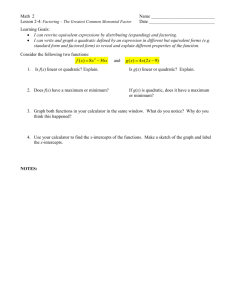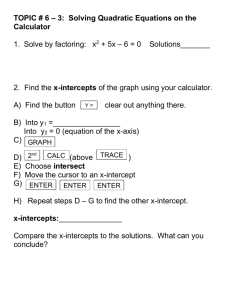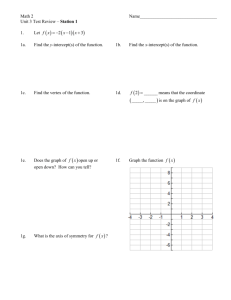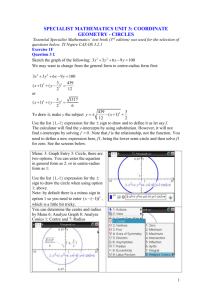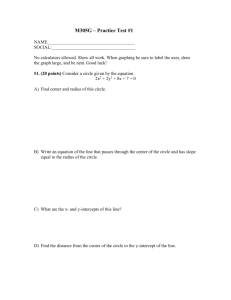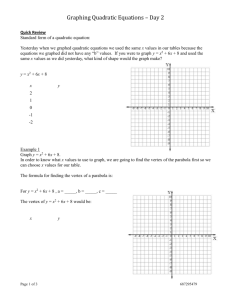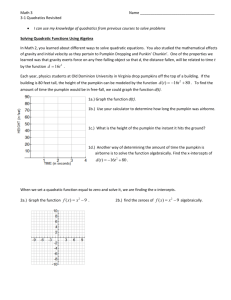Lesson 2-4 Factoring – The Greatest Common Monomial Factor
advertisement
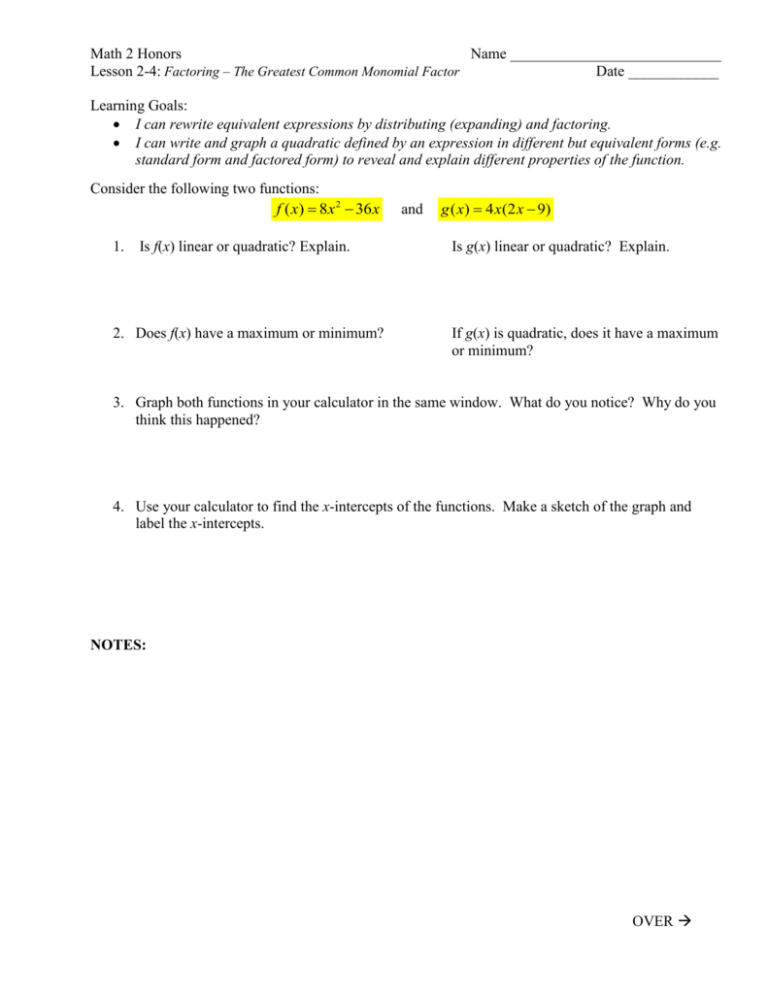
Math 2 Honors Name ____________________________ Lesson 2-4: Factoring – The Greatest Common Monomial Factor Date ____________ Learning Goals: I can rewrite equivalent expressions by distributing (expanding) and factoring. I can write and graph a quadratic defined by an expression in different but equivalent forms (e.g. standard form and factored form) to reveal and explain different properties of the function. Consider the following two functions: f ( x) 8x 2 36 x 1. Is f(x) linear or quadratic? Explain. 2. Does f(x) have a maximum or minimum? and g ( x) 4 x(2 x 9) Is g(x) linear or quadratic? Explain. If g(x) is quadratic, does it have a maximum or minimum? 3. Graph both functions in your calculator in the same window. What do you notice? Why do you think this happened? 4. Use your calculator to find the x-intercepts of the functions. Make a sketch of the graph and label the x-intercepts. NOTES: OVER Page 2 Factor the following functions completely. 1. f ( x) 10 x 80 2. g ( x) 9 x 2 36 3. h( x) x 2 x 4. r ( x) 6 x 2 36 x 5. s( x) 15 x 2 5 6. t ( x) 2 x 2 7 x Now go back and graph each expression in your calculator, one at a time. For each expression, do the following: Use the calculator to identify the x-intercept(s). Make a sketch & label the x-intercepts. 1. 2. 3. 4. 5. 6. What is the connection between the factors and x-intercepts? NOTES: HOMEWORK Factor each expression below, if possible. 4 x 2 12 1. 2. 4 x 14 x 2 3. 11 19x 2 4. 11x 19 x 2 5. 25x 100 6. 6 x 3 2 6 3x 7. 10 2 x 1 4 x 5 3x 8. 4 x 2 100 x 9. x2 The following functions are already in factored form. Find their x-intercepts WITHOUT graphing. 10. f ( x) 10 x( x 19) 11. g ( x) (2 x 9) x 12. h( x) 8 x( x 1) 13. g ( x) ( x 17)( x 13) Factor the following functions. Then use the factors to find the x-intercepts WITHOUT graphing. 14. h( x ) x 2 2 x 15. e( x) 6 x 12 16. i( x) 100 x 800 x 2 17. n( x) 45 x 2 25 x OVER 18. l ( x) 20 x 2 200 19. m( x) 2 x 2 28 x Review: Use the distributive property to write the given expressions in standard form: 2 20. 4 x 2 x 5 Circle one: Maximum 22. 21. Minimum 9 2 x 1 4 x 5 3x Circle one: Maximum 24. ax bx c Circle one: Maximum Circle one: Maximum 23. Minimum 4 x2 3 x 4 2 x Minimum 5 x 2 x 8 7 3x 2 4 x 2 Circle one: Maximum 25. Minimum Minimum 10 2 x 8 8 3 x 2 4 x Circle one: Maximum Minimum
